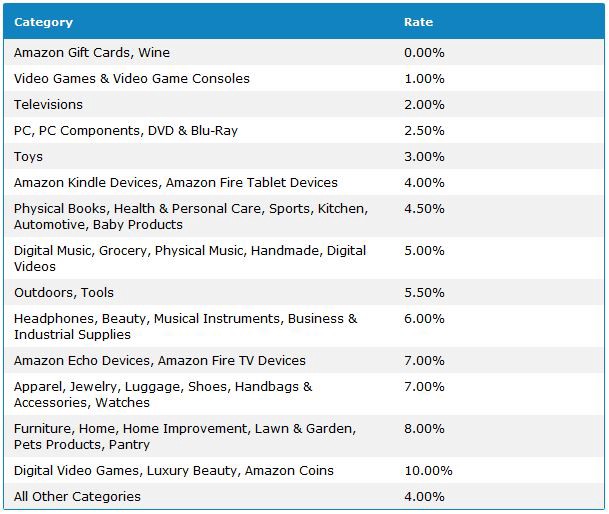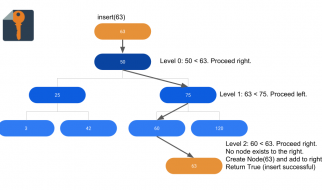Most people think that they need a website to make money with Amazon Associates, but that simply is not true! In fact, by using a strategy called parasite SEO which we describe in another article, it is probably easier to do affiliate marketing without a website than with one. You may be limited in terms of monetization methods and CRO when using free content publishing platforms like YouTube, Medium, or LinkedIn, but they also have many benefits. Some of those benefits include internal traffic and super high authority with Google, allowing you to easily achieve SEO rankings.
Here is a step by step guide on how to make money with the Amazon affiliate program without a website:
Step 1: Choose a Niche
Although it is possible to target many niches all at once, niching down is important for various reasons, including, but not limited to:
- Building a brand/authority in a niche: If you choose a low competition niche, it is relatively easy to become and authority in the eyes of Google and your readers.
- Understanding the subject matter: Once you understand the subject matter, it should be relatively easy to write more about that particular topic and become somewhat of an expert.
What Makes up a Good Niche?
Here are the main factors we look for when selecting niches for Amazon affiliate marketing:
- Is there a lot of competition in the niche?
There are some niches, like weight loss or recipes, that we do not recommend for anyone. The best way to check a particular niche?s competition is to look at what the search results show when you search for long-tail keywords. Are there several large brands that specialize in the niche, or do the results mainly consist of small affiliate sites and forms? If it is the latter, this is a good sign.
- Is the niche product focused?
By product focused, we mean are people in your niche often required to purchase lots of equipment in order to do the task. A hobby like mountain climbing is a good examples of this. You can also do some simple keyword research to see if there is a lot of search volume around product focused keywords in that niche like product reviews or ?best product for X?.
- How profitable is it to promote products in that niche
As you can see in the table below, the Amazon Associates program has varying payout percentages based off of what category a particular item falls under.

We suggest that you try to go for product categories that payout at least 4% or higher, and have an average ticket price of around $60-$600. Promoting low ticket products can often generate more conversions, but it will be hard to earn a substantial amount of income with the current payouts Amazon offers. Promoting products that are high ticket has the opposite problem, with too low of a conversion rate, thus why we like to target in-between.
To further research the profitability of promoting certain products, you should look for niche websites on Flippa to see their average earnings per thousand page views. Any website that earns above $80 per 1,000 page views suggests that the products/keywords that are targeted on that website are decent earners. That being said, some products/keywords can still be highly profitable even if they have a lower earnings per 1,000 page views due to more/easier traffic potential. This is often the case with websites that target mostly informational intent keywords like ?how to do X?, rather than mostly targeting buyer intent keywords like: ?best product for X?.
- Is there a lot of searches for ?how to? and product focused searches in the niche?
We prefer to write a mix of product focused articles and tutorials for our content. The task explained in your tutorials should be simple enough that people would want to do it themselves, but just complicated enough to require a tutorial. In some niches this could also set you up to upsell your audience on a course or consulting service.
Step 2: Keyword Research
Keyword Intent
Now that you have chosen your niche, it is time to find some keywords/article topics that will be profitable to rank for in that niche. As we mentioned before, we would recommend going for a mix of buyer intent keywords and informational intent keywords. To determine what percentage of your articles should cover buyer intent keywords, we suggest taking your primary monetization method into consideration. If for example Amazon Associates is your main monetization method, we recommend that about 80% of your articles should target buyer intent keywords, and about 20% of them should target informational intent keywords. If you want to monetize with information products and/or consulting services, it would probably be the other way around.
Keyword Competition
If you are new to SEO, or would like to rank without the costs associated with link building, we suggest that you go after long-tail keywords. If you do not know what long-tail keywords are, they are simply keywords that are multiple words long instead of just 1 or 2 words. These keywords will have less traffic than less wordy keywords in the niche, but they will also commonly be less competitive. For example, with this article, choosing to target: ?How to Make Money with Amazon Affiliate Without a Website? instead of simple ?How to Make Money with Amazon Affiliate? makes it much easier for us to rank.
In order to find these long-tail keywords, we suggest that you use our longtail tool, or use our content strategy service to do it for you. We also recommend downloading Keywords Everywhere, a browser extension, that you can find at this link. It will allow you to see data associated with search terms in your search results, and suggest possible long-tail variations. We typically do something similar to the video below:
Another strategy that you can use to find low competition keywords in your niche is to plug some of your low authority competitors into SEMrush. What SEMrush does is it shows you the keywords that your competitors are currently ranking for, and data on those keywords, like search volume for example. We suggest analyzing low authority websites in your niche because you can generally assume that you can outrank them for their keywords if you use a high authority domain and do good SEO.
Step 3: Choose a Free Content Publishing Platform to Use
While there are some benefits to using your own website, there are many more that come along with publishing content on high authority sites like: Medium, LinkedIn, or YouTube (if you want to make video content).
Some of those benefits include:
- High trust and authority from search engines
- You are able to rank much faster (about 2-4 months)
- If you choose to do link building, it is much safer to do it on a high authority domain than it is on a new one. In fact, you can even do this at a level that may be considered spam on a regular website. Part of that being relatively high percentages of keyword related anchor text.
- Well known sites that host 3rd party content often get better click through rates due to brand recognition. This usually leads to higher rankings and more traffic.
Step 4: Write the Content and Do On Page SEO
Many SEO?s or affiliate marketers will try to make niche blogs with subpar content, but this can lead to fighting an uphill battle. It is important, both for rankings and conversion rates, that your content is high in quality. When people are on your article, Google will use user engagement as a major ranking factor. That is why you want to make your content engaging, and at the same time provide users with a direct answer to what they are searching for. Also, keep in mind that you should be putting out a decent volume of content. In general, the more keyword targeted and high quality articles you write, the higher your chances of getting more rankings, traffic, and commissions. If this or any other tactics in this guide sound difficult for you, and/or you would rather outsource the work, consider ordering our done for you content marketing service.
On Page SEO
When doing on page SEO we recommend using a tool like Surfer SEO. It will backwards engineer the pages that are already ranking, and give you data driven suggestions that you can use for your page.
Step 5: Promote the Content on Social Platforms (Optional)
Getting referral traffic and social signals to an article can help it rank both faster and higher in search engines, not to mention that you may get some conversions just from the social promotion itself. You can easily get some traffic to your informational articles by posting in Facebook groups or on forums like Quora. Just make sure to be careful when doing this because you can run into some issues with the owners of these platforms.
Step 6: Wait
Usually we find that articles published on high powered domains like LinkedIn tend to take about 2?8 months to settle in Google, so just allow them to sit for a bit. In many cases if you properly did your keyword research, content writing, and published on a high authority domain, you should be ranking high already. If you are ranking on the second or third page after about 4 months of being indexed on a high authority domain, it is time for link building.
Step 7: Link Building (Optional)
One of the advantages of publishing your content on a high quality domain like LinkedIn or Medium is that you can build links with very little risk. For this step we recommend the following:
Foundational Links
These links include links like social profiles and citations. They should give you a small boost in the search engines, but their main purpose is to provide a link and anchor text foundation so that you can easily build stronger links. We suggest using all naked urls and generic anchor text for these links.
PBN Links
These work great when ranking parasite pages. A service like Superstar SEO?s PBN service can get you ranking on it?s own. Assuming you have created a link foundation already with un-optimized anchor text, we suggest that you use keyword related anchor text for at least 10% of the high quality PBN links you buy. Just make sure to not use the exact same anchor text multiple times as this may look spammy to Google.
Guest Posts
The effectiveness of a guest post will vary greatly based upon the quality of the website and content used for the guest post. We suggest getting handwritten content for these guest posts and confirm the website you are posting on has real search rankings by plugging it into a tool like Ahrefs or SEMrush. You can use this service to get the guest post for you.
Step 8: Remarketing and Email Marketing (Optional)
The reason we marked this step as optional is because it is fully possible to have a profitable blog without it, but it can expand your revenue if you choose to do it. Keep in mind though that because this article is about how to do rank without a website, getting people to opt-in to email lists or setting up remarketing pixels may not be possible on some content publishing platforms. Instead, we suggest that you link people to a landing page you set up or at least to a free optin form from a site like Survey Monkey. Once you have their contact information you can use an autoresponder like AWeber to send them emails on a drip-feed sequence.
There are a wide variety of ways that you can utilize an email list. For example, you can inform your list about when you publish new articles. By bringing traffic and engagement to these articles they can improve the rankings and possibly get you some conversions. This works in a similar way to social media promotion.
That?s it! Simply rinse and repeat and as long as you?re getting rankings and traffic, you should start to see conversions.
Conclusion
While a website has its? benefits, it is quite possible to make money without one. Have you given these methods a try? Join our Facebook group to continue this discussion.


